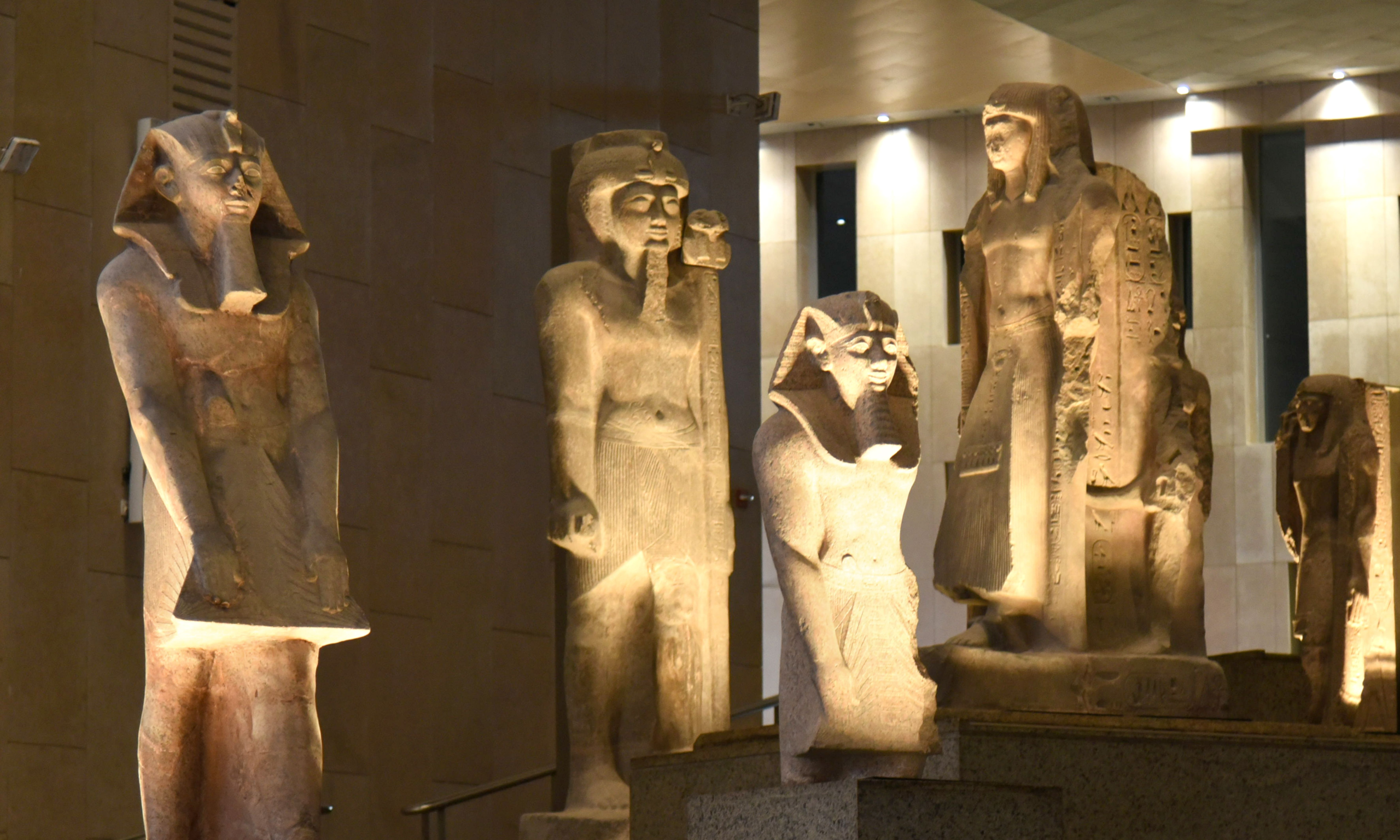Construction on the Grand Egyptian Museum began in 2012 © Grand Egyptian Museum
The Grand Egyptian Museum has moved a step closer to the long-awaited full opening, with 12 galleries now available to visit. The Cairo museum, sited adjacent to the Giza pyramids, will be the largest archeological museum in the world, with 500,000 sq. m devoted to treasures from the pyramids and other periods in Egypt’s long and storied history.
The new exhibition halls present Egyptian artefacts from the prehistoric era, dating from 700,000 BC, to the Roman era of the fourth century AD, arranged around themes of kingship, society, and beliefs. Statues, sarcophagi, and stelae will give a view into the life of Egypt’s ancient elite and how they prepared themselves for what came after. Press reports say that the soft opening will allow the institution to map visitor movement and better understand any improvements to be made.
The museum’s stand-out gallery—the grand gem of the GEM—remains closed. The Tutankhamun Gallery will display artefacts found in the tomb of the boy king, and will be part of the museum’s full official opening, whose date is still not set.
A view of the museum's main galleries © Grand Egyptian Museum
The suite of partial openings have enticed and befuddled potential visitors for years. Egypt has had a museum of antiquities since 1858, in a Cairo building that by the late 20th century was clearly inadequate to the amount of tourist interest. In 1992, then-president Hosni Mubarak announced the establishment of a new museum away from the city centre.
Construction on the Giza site began in 2012, and met with repeated delays due to the Arab Spring, resulting political turmoil, and the Covid-19 pandemic. But the museum was active, with archeological laboratories embedded within the institution itself that made several scientific discoveries. The activity helped fuel calls for the repatriation of artefacts from global museums, though no framework or official calls have been made.
In 2022 construction was said to be almost finished, and further areas were opened to the public, such as the children’s library, the outdoor gardens, food and beverage offerings, and the building’s signature six-storey staircase with its views of the nearby pyramids.
The facade of the Grand Egyptian Museum © Grand Egyptian Museum
The museum has not specified the reason for most recent delay but a prevailing consensus points to the dire economy in Egypt. The Egyptian pound has depreciated by 600% since Abdel Fattah El Sisi came to power in 2014, and the government has invested in a series of mega-projects that are far from the needs of everyday Egyptians. Though the Grand Egyptian Museum has cost $1bn so far, it is not even on the scale of these other works, which are running into numbers such as an estimated $50bn for the New Administrative Capital, east of Cairo, and an estimated $80bn for an irrigation network in Toshka, near the Aswan Dam.
The wars in Gaza and Sudan have also exacerbated the economic situation, with around 737,000 registered refugees and asylum-seekers in Egypt, according to the United Nations High Commissioner for Refugees—many of them women and children with lack of access to health care. One art professional in Cairo tells The Art Newspaper that the leadership of the Grand Egyptian Museum simply does not feel it is not the appropriate time for a lavish opening ceremony.
Within this context the GEM’s partial opening is significant cause for celebration, particularly given the worldwide interest in the country’s Pharaonic past. Even with Tutankhamun still under wraps, the museum can now start welcoming some of the 15 million tourists—a needed source of income as well as a source of national pride—who visit Giza each year.

